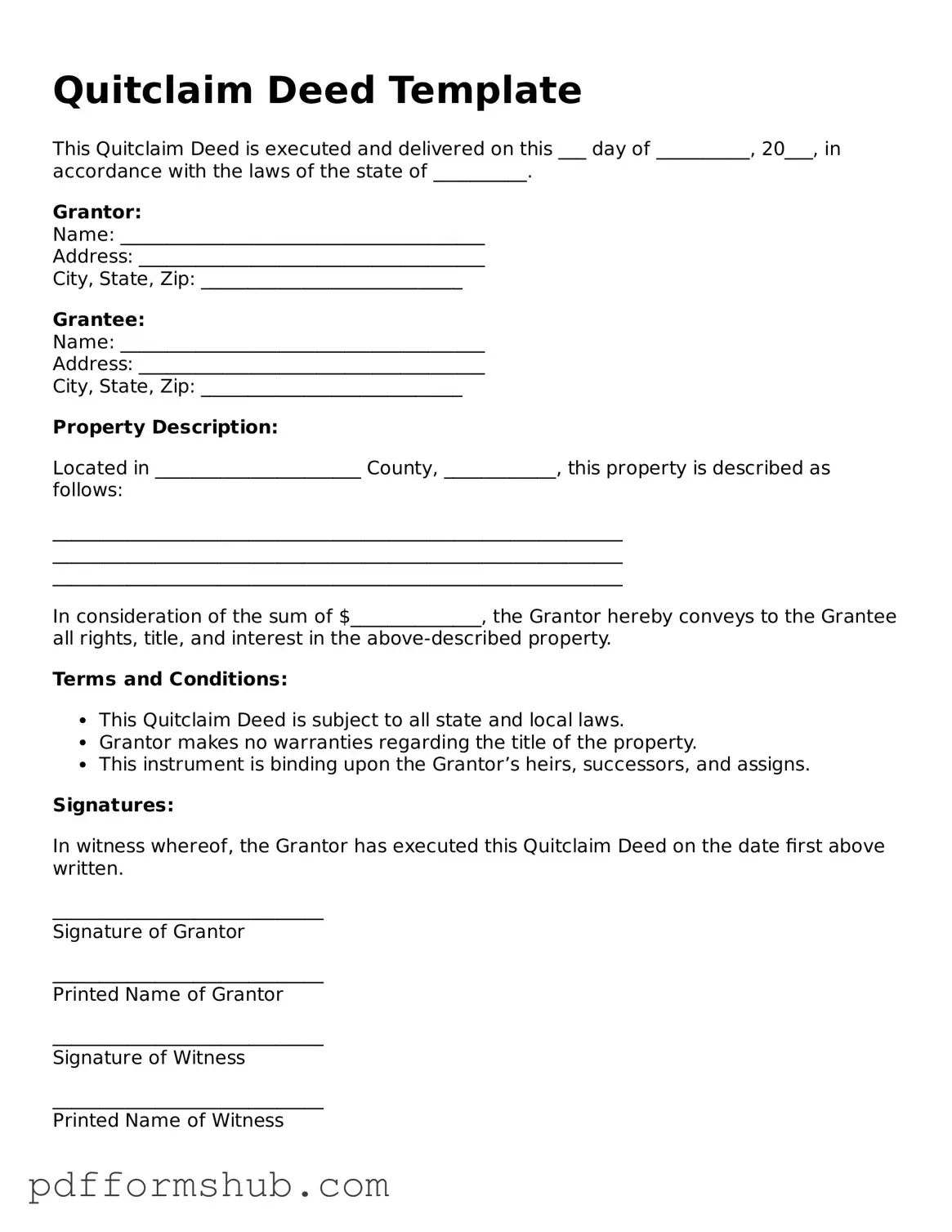A Quitclaim Deed is a useful legal document that facilitates the transfer of property ownership between parties. Unlike other types of deeds, it does not guarantee that the grantor holds clear title to the property. Instead, it simply conveys whatever interest the grantor may have at the time of the transfer. This makes it an ideal choice for specific situations, such as transferring property between family members or clearing up title issues. The form typically includes essential details such as the names of the parties involved, a description of the property, and the date of transfer. Importantly, while a Quitclaim Deed can simplify the transfer process, it is crucial for both parties to understand the implications of this type of deed, particularly regarding any potential claims or liens on the property. Overall, this form plays a significant role in real estate transactions, offering a straightforward approach to property transfers without the complexities often associated with warranty deeds.
